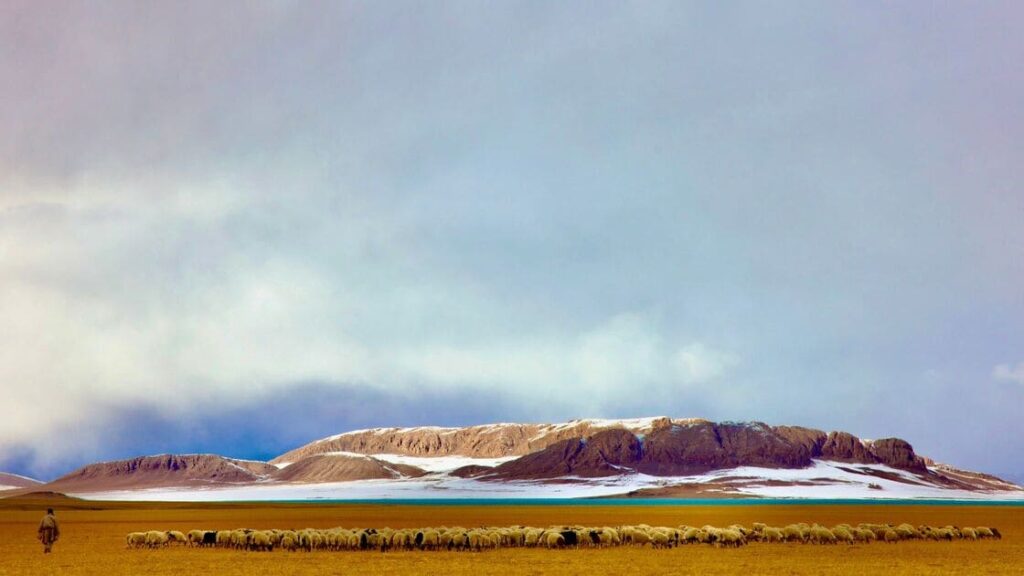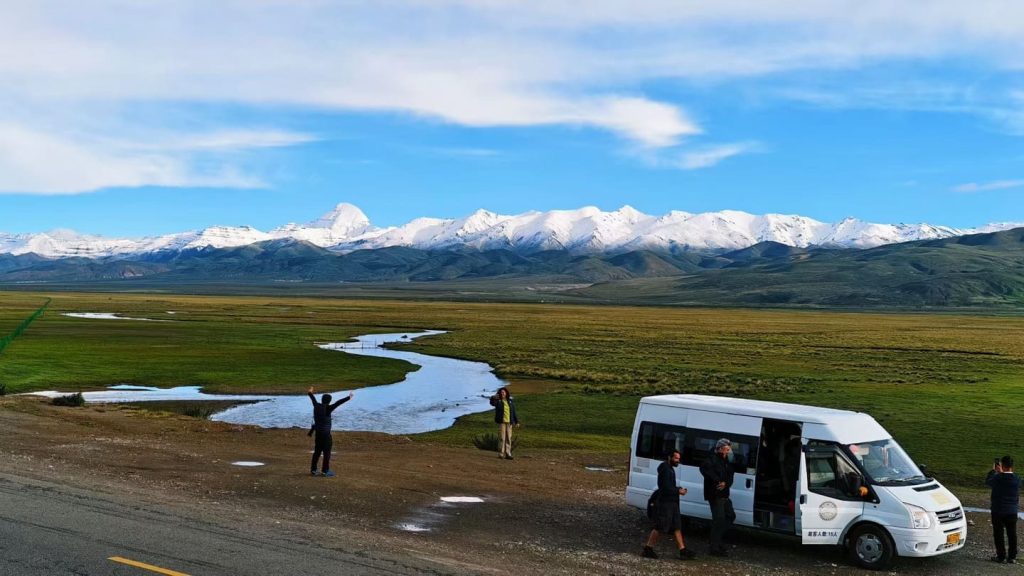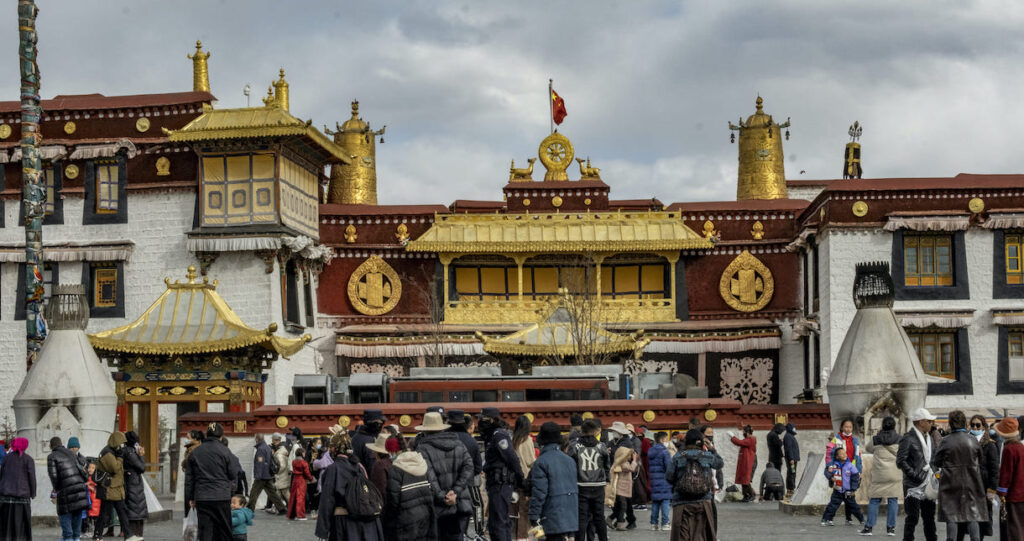Tibet is a land that has captured the imaginations of travelers for centuries. Its towering peaks, ancient monasteries, and deeply spiritual atmosphere make it a destination unlike any other. For many, one of the most extraordinary ways to reach Tibet is by train—specifically, the Tibet Railway. This modern marvel is not just a transportation route; it’s an experience in itself. Whether you’re crossing the vast Tibetan Plateau or heading towards the ancient city of Lhasa, a Tibet train tour offers stunning views and a unique way to travel to the Roof of the World.

In winter, the journey takes on an even more magical atmosphere. While temperatures can drop below freezing, winter in Tibet is quieter, more serene, and less crowded than the summer months. Imagine gliding across snow-covered landscapes, passing frozen lakes, and watching the sun rise over the mighty Himalayas as you journey toward the heart of Tibetan culture. But taking a Tibet train tour in winter comes with its own set of challenges and preparations.
In this blog post, we’ll explore everything you need to know about taking a Tibet train tour in winter—from how to book tickets and where to go, to tips on dealing with the cold, acclimatization, and how to make the most of this unforgettable experience.
Why Take the Tibet Train in Winter?
While summer may seem like the prime time to travel to Tibet, winter brings a unique set of advantages for train travelers. Here’s why winter can be one of the best times to take a Tibet train tour:
1. Fewer Tourists
Winter is considered the off-season for tourism in Tibet, meaning fewer tourists on the train and at major attractions. This gives you the chance to enjoy a more peaceful, authentic experience of Tibet without the crowds. The iconic sites like Potala Palace, Jokhang Temple, and Namtso Lake are quieter, offering a more intimate and contemplative experience.
2. Lower Costs
Since winter is the off-season, many hotels, tours, and train tickets are offered at a discount. You can travel to Tibet for less, allowing you to stretch your budget further. This makes it an ideal time to experience the region without the hefty price tag that comes with the summer months.
3. Stunning Winter Landscapes
Tibet in winter is a snow-covered wonderland. The mighty Himalayas, frozen lakes, and quiet monasteries create a beautiful and serene atmosphere. The train journey itself offers breathtaking views of snow-capped peaks, vast plateaus, and distant mountain ranges, which you can enjoy from the comfort of your seat.
4. Spiritual Serenity
Winter in Tibet is not just about the landscapes; it’s also about the spiritual energy that permeates the region. Many pilgrims visit Tibet in the colder months, making it an ideal time for reflection, meditation, and personal growth. You’ll have the opportunity to experience Tibet’s profound spirituality without the distractions of a busy tourist season.

How to Book a Tibet Train Tour in Winter
Booking a Tibet train ticket in winter is similar to booking a ticket during other seasons, but there are a few important details to keep in mind.
1. Plan Ahead
While winter is the off-season, Tibet is still a popular destination, and there are limited train tickets available. It’s best to book your tickets well in advance, especially if you plan to travel around major holidays like the Tibetan New Year.
2. Choose Your Departure City
The Tibet Railway begins in Xining, the capital of Qinghai Province, and connects to Lhasa, the capital of Tibet. There are also several other departure points for travelers, such as Chengdu, Xi’an, Shanghai, and Beijing, but the most popular route is from Xining to Lhasa.
• Xining to Lhasa: This route takes approximately 22 hours, covering over 1,900 kilometers (about 1,200 miles). It’s a comfortable journey that passes through stunning landscapes, including the Qinghai-Tibet Plateau.
• Chengdu to Lhasa: This route is another popular option, though it takes slightly longer—about 36 hours. You’ll travel through the Sichuan-Tibet Plateau and see a variety of Tibetan towns and villages.
3. Booking Tickets
You’ll need to book your tickets through an authorized tour operator or directly from the China Railway website. Keep in mind that foreign travelers are required to obtain a Tibet Travel Permit in addition to their train ticket, and this permit must be arranged through a registered tour operator.

How to Book:
• Online: You can book your tickets through official websites such as the China Railway website or trusted third-party travel agencies.
• Via Tour Operators: If you’re traveling with a guided tour or package, the tour operator will usually arrange the train tickets for you as part of the overall package.
4. Travel Permits
All travelers to Tibet require a Tibet Travel Permit. This permit is essential for entering Tibet and cannot be obtained independently. It must be applied for through a registered travel agency, and it takes about 10 to 15 days to process. In addition to the Tibet Travel Permit, foreigners may also need a Chinese Visa, depending on their nationality.
What to Expect on the Tibet Train in Winter
Taking the train to Tibet is a unique experience in itself, especially in winter. The journey is one of the highest in the world, with the Tibet Railway reaching altitudes over 5,000 meters (16,404 feet). Here’s what you can expect during your winter train tour:
1. Stunning Scenic Views
The train route from Xining to Lhasa offers some of the most spectacular views on Earth. You’ll pass through the Qinghai-Tibet Plateau, cross frozen rivers, and get a close-up view of the mighty Himalayas. In winter, the snow-covered landscape adds a touch of magic, as the entire region transforms into a white wonderland.
Some of the highlights include:
• Tanggula Mountains: This mountain range is one of the highest on the Tibet Railway route. You’ll pass through the famous Tanggula Pass, which stands at over 5,000 meters (16,404 feet).
• Changtang Plateau: A vast, open plateau that stretches as far as the eye can see, dotted with yaks and nomadic herders’ tents.
• Namtso Lake: If you’re lucky, you may catch a glimpse of this stunning lake as the train rolls through Tibet, surrounded by snow-capped mountains.
2. Comfortable Train Carriages
Tibet’s trains are specially designed to handle the high-altitude conditions, and the train carriages are equipped with oxygen supply systems to prevent altitude sickness. In winter, you can expect heated cabins, making the cold journey much more comfortable. The windows are large and offer panoramic views of the passing landscapes.
There are three types of seats available:
• Soft Seat: Comfortable seats that are ideal for shorter journeys.
• Soft Sleeper: A cabin with four beds (two on each side), providing a more private and restful experience for overnight travelers.
• Hard Sleeper: The least expensive option, with six beds per compartment, but still reasonably comfortable for budget travelers.
3. High Altitude and Oxygen Supply
The Tibet Railway reaches altitudes that can cause altitude sickness if you’re not adequately acclimatized. The train is equipped with an oxygen supply system, and oxygen is pumped into the cabins as you pass through higher altitudes. However, it’s still important to be aware of the potential symptoms of altitude sickness, such as dizziness, headaches, and shortness of breath.
To avoid altitude sickness, make sure to:
• Hydrate well: Drink plenty of water during the journey.
• Take it easy: Avoid overexerting yourself, and rest as much as possible.
• Eat light meals: Heavy meals can exacerbate the effects of altitude sickness.
4. Cold Weather Considerations
Winter temperatures in Tibet can plummet to below freezing, especially in the early mornings and evenings. While the train is heated, you should dress warmly and bring layers of clothing. Wear thermal clothing, a good winter coat, and pack gloves, hats, and scarves to stay warm.
The temperature inside the train can be comfortably warm, but you’ll want to be prepared for the cold when you step outside to stretch your legs during stops.

What to Do on the Tibet Train: Making the Most of Your Journey
While the main attraction of the Tibet train journey is the stunning scenery, there are plenty of other ways to make the most of your time on board:
1. Engage with Fellow Travelers
The Tibet train is a popular choice for travelers from all over the world. Take this opportunity to engage with fellow passengers, share travel stories, and even learn a bit about Tibetan culture. Many travelers use the train journey as a way to reflect on their spiritual or personal growth, making it an ideal setting for meaningful conversations.
2. Meditate and Reflect
The tranquility of the Tibetan landscape offers the perfect opportunity to meditate. Many passengers find it to be a deeply reflective experience to meditate while looking out over the snow-covered plateaus and mountains. The peace of the train ride, combined with the stunning scenery, can be incredibly conducive to mindfulness and spiritual reflection.
3. Take Photos
The Tibet Railway offers some of the most breathtaking landscapes you’ll ever encounter. Be sure to bring a good camera and capture the stunning views along the way. From frozen lakes to the towering mountains, every moment offers a chance to document your adventure.
4. Enjoy Local Snacks and Food
Though the train ride might be long, there are food and beverage options available on board. In addition to snacks and drinks, try some traditional Tibetan foods such as momo (dumplings) or thukpa (noodle soup). You can also enjoy a cup of butter tea to warm up and immerse yourself in Tibetan culture.

Conclusion: The Ultimate Winter Adventure to Tibet by Train
A Tibet train tour in winter is an adventure like no other. The stunning landscapes, unique cultural experiences, and spiritual atmosphere of Tibet are brought to life in a way that few other forms of travel can match. Whether you’re exploring the remote plateau, witnessing the majesty of the Himalayas, or reflecting on your journey from the comfort of the train, the experience will leave you with lasting memories and a deeper connection to the Roof of the World.
While there are challenges—such as the cold weather and the need to acclimatize to the high altitude—the rewards are immeasurable. Traveling by train is one of the most immersive and scenic ways to experience Tibet, and in winter, it’s an even more magical and personal adventure. So, bundle up, prepare for the journey, and get ready to explore one of the world’s most extraordinary destinations in a truly unforgettable way.
